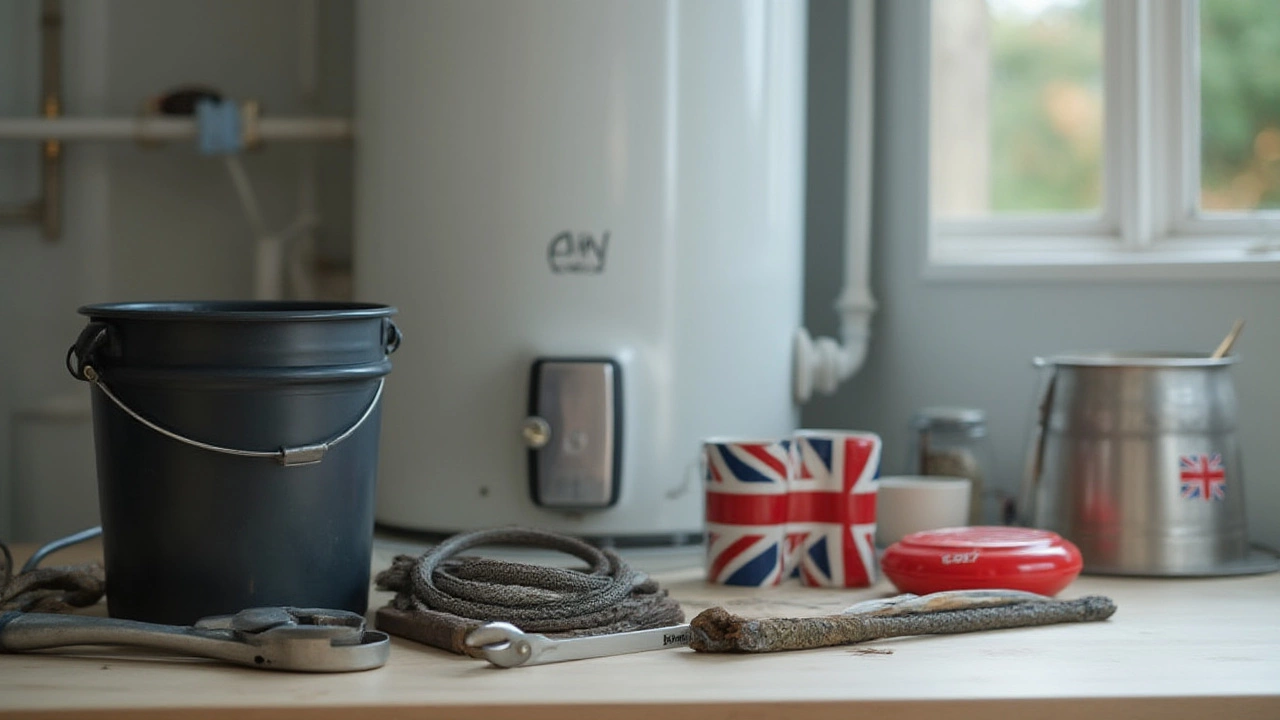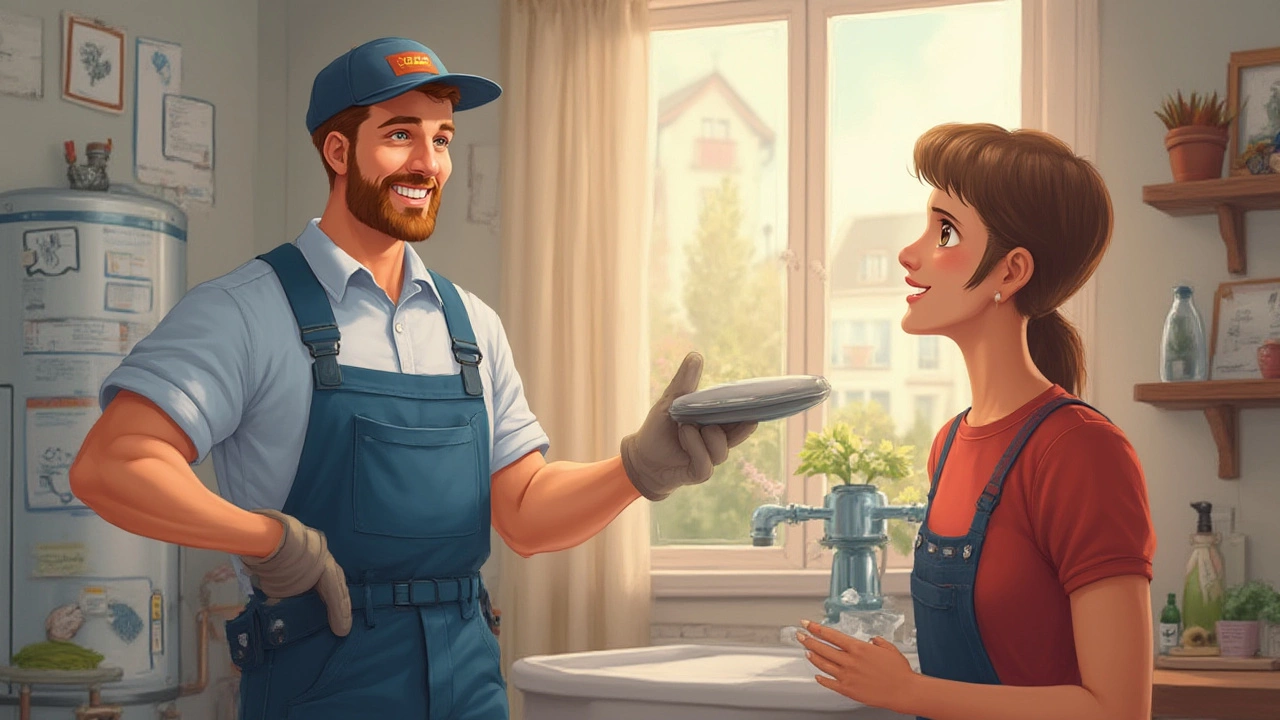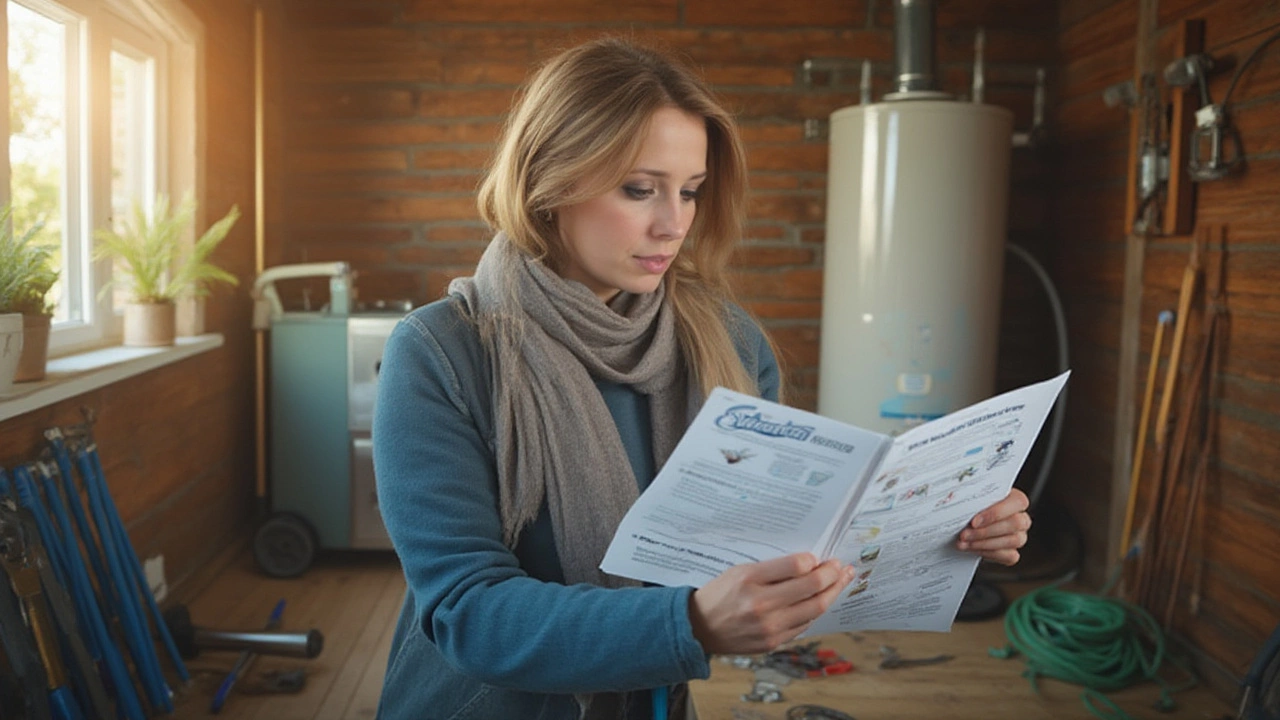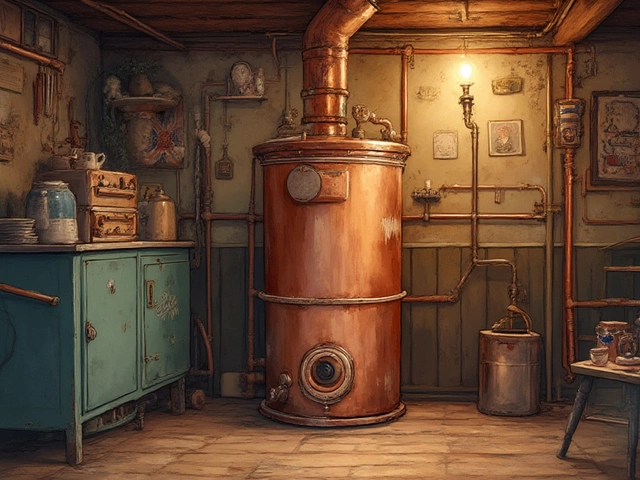Ever opened the hot tap and wondered why your shower’s feeling more ‘drizzle’ than ‘rainstorm’? Sometimes your water heater is the culprit. Loads of people ignore theirs until disaster strikes—lukewarm water or a strange gurgling noise like a kettle from the back of the cupboard. Water heaters may look invincible, but they’re quietly collecting a big enemy: limescale. If you’ve got hard water (spoiler: much of the UK does), your tank is slowly building up a crusty layer of minerals, making it work harder and burn more cash in the process. The truth? Flushing your water heater keeps it performing at its best and can add years to its life.
Why Flush Your Water Heater? Real Impact on Efficiency and Energy Bills
Not enough people think about the water heater until it’s practically screaming for attention. Limescale is the villain here. The UK's famously hard water means that, even in just a year or two, your tank can turn into a mineral time-bomb. Each time the burner heats water, those dissolved minerals—mostly calcium and magnesium—settle out, coating the inside of your water heater. Over time, this layer grows thicker, acting like a thermal blanket you definitely don’t want. Your water heater ends up working twice as hard (and you can see it in your gas or electric bill).
Here’s a wild fact: Worcester Bosch, a major UK boiler and tank maker, says that regular flushing can extend a cylinder’s useful life by up to 30%. Miss out on care and you could be chopping years off your heater’s lifespan. That’s not just geeky trivia—water heaters can cost anywhere from £300 for a basic model to over £1,500 for a top-tier one, not counting installation. It’s sensible to keep yours running as long as possible.
Limescale and sediment don’t just gobble energy—they can cause loud popping or banging sounds, like someone’s throwing marbles in the tank. That’s your heater ‘protesting’ as it struggles to push water through a wall of hardened minerals. Efficiency tanks, and so does water quality. If you’ve noticed rusty or cloudy hot water, or the heater takes an eternity to recover after a bath, sediment could be to blame. That also means your morning cuppa or evening bath isn’t as clean as you’d want. Flushing washes all that out, leaving your water and heating bills lighter.
The evidence isn’t just anecdotal. A recent study in Bath (2023) showed regular flushing reduced energy consumption in domestic water heaters by nearly 15% for households in hard water areas. If the average UK family spends about £350 a year on hot water heating, that’s a decent saving just for a Saturday’s effort. And with energy costs rising, every bit helps. Think of flushing as a free tune-up that pays you back—all without any fancy equipment.

Is DIY Water Heater Flushing Safe (and Worth It)?
If you’re comfortable with basics—turning off valves, twisting a spanner, and following steps—it’s pretty straightforward. The idea of hundreds of litres of hot water pouring over your shoes might sound scary, but with care and a bit of planning, most folks handle it fine. People naturally worry about safety (no one fancies a scalding or a living room flood). The big trick is turning off both the power and water supply. If you rush, or ignore the heater’s manual, that’s when things get hairy.
Before you call in a plumber, think about the tools you need. Not much—just a garden hose, a big bucket, maybe adjustable pliers, and a flat-head screwdriver. That’s it. No electrician or specialist kit required. But there’s a must-do: always read your heater’s manual. Some modern combi boilers and unvented cylinders have quirks and safety locks, so it pays to check. If you’re not sure about something—like isolating electrics—play it safe and call a pro. No shame in it, especially with unfamiliar systems.
- Turn off the power or put gas on pilot mode. For an electric unit, flick the breaker. For gas, switch to pilot (not just off). Give it 30-60 minutes to cool; never flush a scalding tank unless you love melted hoses or burnt hands.
- Shut the cold water inlet valve (it’s usually above the heater). No new water means the tank will empty instead of endlessly refilling while you drain it!
- Attach a hose to the drain valve (bottom of the tank). Aim the other end somewhere safe—a drain, or direct to the garden. The water can be hot and mucky. And don’t keep the hose coiled or kinked, or you’ll just make a mess.
- Open the drain valve slowly. Open a hot tap upstairs to break the vacuum—this helps the tank drain quickly and fully.
- Once the tank’s empty, briefly turn the cold inlet ON for a few seconds. This stirs up stuck sediment so you can flush it all out. Drain again. Repeat until the water runs clear.
- Shut the drain valve, disconnect the hose, and close the hot tap. Only then turn cold water ON and refill the tank. Check for leaks.
- Once the tank’s full (listen for the gurgling to stop!) restore the power or relight the pilot.
Sure, it’s tempting to skip draining every last bit of water, but stubborn sediment loves to hide at the bottom. Flushing until the water runs clear is your sign you did the job right. If your heater’s never been flushed before, prepare for some impressive grit and sludge. That’s not bad luck, that’s just what builds up.
One thing: unvented or ‘pressurised’ cylinders, which have swept the UK since the 2000s, sometimes have extra safety valves, expansion vessels, or even factory seals that only a registered engineer should touch. Same with any system under warranty—breaking a factory seal or removing a cover could void it. Always check first. But if you’ve got a good old vented hot water cylinder, there’s usually nothing stopping you from a DIY flush.

What Happens If You Ignore Flushing… And How Often Should You Do It?
It’s easy to get busy and let maintenance slip down the list, especially if the hot tap still ‘just about’ works. Here’s the rub: a neglected tank can double your odds of a breakdown. Fixing or replacing a heater after a full-scale sediment blockage is way pricier than a simple flush. And we’re not talking about distant risks—sediment problems can show up after just a year of hard water. People often notice rumbling or popping after baths, slower heat-up times, or rust coming out of the taps. Leave it long enough, and the element can overheat, warp, or even burn out. That’s not just an extra bill, it can be a headache for weeks, especially during holidays or winter freezes.
| Tank Age | Recommended Flush Frequency | Hard Water Sites (UK) |
|---|---|---|
| Under 2 years | Every 18 months | London, Bristol, Bath, Birmingham |
| 2-6 years | Yearly | Most Southern/Eastern English cities |
| 6+ years | Twice a year | Any area with visible limescale in kettles |
If you can see flakes or chalky residue inside your kettle, your water heater’s dealing with double that. That means, in most UK homes, it’s smart to flush yearly. If you moved into an older property and haven’t got a clue when (or if) it was last flushed, you’re in luck—it’s easy to check. Drain a few litres from the bottom valve into a clear bucket. If it’s rusty, cloudy, or shows bits, the tank’s overdue for a good flush. Clean water means you're set for a little while.
Skipping regular maintenance isn’t just about your wallet—it’s a safety issue. Sediment can trap heat, leading to pressure build-up inside your tank. In extreme cases, this could trip safety valves, or worse, damage your system entirely. Insurance companies sometimes ask about maintenance history if you ever do have a major water leak—something to bear in mind, especially as home claims rise each winter.
The benefits of regular flushing are more than just theoretical. You’ll notice faster hot water delivery, cleaner water, less noise, and—best of all—cheaper energy bills. Plus, you’ll probably double the lifespan of your tank, which is always good news for any homeowner.
In the end, it comes down to simple routine: put a flushing reminder in your calendar once a year, just like you do with car MOTs or the annual boiler service. It takes an afternoon, a bit of patience, and the willingness to get your hands a bit dirty. But every time you enjoy a hot shower at full blast, you’ll know it was worth it.




